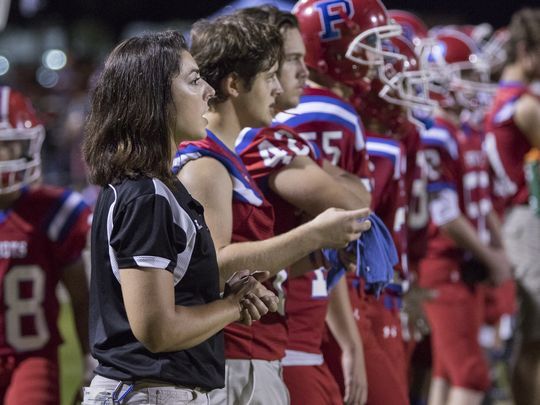
Article reposted from Pensacola News Journal
Author: Eric J. Wallace
You’ve seen them on your high school sports sidelines, and they’ve probably had a helping hand in taking care of your favorite young athletes.
For 20 years, certified athletic trainers from Baptist Health Care, and now the Andrews Institute, have provided on-the-spot medical care for high school athletes in Northwest Florida, be it managing hydration or emergency triage for on-field injuries.
The services have come at no cost to student-athletes and parents while the savings to institutions, which include 23 high schools and four small colleges across Escambia, Santa Rosa, Okaloosa and Walton Counties, often reach well beyond a school’s budget.
“It’s invaluable. We’re kind of the envy of the state because of the situation we’re in,” Escambia County athletic director Roger Mayo said. “That’s been a crucial situation.”
While it may be easy to take such services for granted — particularly when a generation of the area’s athletes have had the services since the program’s inception in 1997 — the situation in Northwest Florida is far from the norm.
According to a 2015 study published by the Korey Stringer Institute at the University of Connecticut — which studied 14,951 schools from all 50 states — 70 percent of public secondary schools in the United States had access to athletic-training services, with only 37 percent reporting full-time athletic training services.
That total is doubled from the 35 percent of schools that reported any access to athletic-training services in 1994.
But later studies from the Korey Stringer Institute indicated that budget concerns have limited the expansion of athletic-training services, despite a growing preference for them from school athletic directors.
It’s little surprise considering that the annual mean wage for athletic trainers in 2016 was $47,880, according to the U.S. Bureau of Labor Statistics. Those wages alone, when multiplied across 27 schools across Northwest Florida, would creep into the millions.
Former FHSAA Executive Director Roger Dearing estimated in 2013 that it would cost nearly $30 million to have athletic trainers at every high school in Florida.
“No school district could afford that,” Mayo said. “You would have to start eliminating coaching supplements to be able to do that, but then you’re talking about a trainer having to have a curriculum to teach. Most athletic trainers don’t have teaching certificates.”
The costs alone have inspired some schools districts to find shortcuts for their athletic programs.
Be it first-aid trained coaching staffs or community volunteers from local clinics and hospitals, athletic directors have often chosen athletic trainers as a corner to cut when feeling bound by the budgeting decisions of superintendents and school boards.
Those corners may be cut in the name of financial necessity, but the cost can ultimately come on the shoulders of the student-athlete.
“I always like to point out that we’re a nationally certified profession,” said Kathleen McGraw, sports medicine coordinator at the Andrews Institute. “Most states require you to be licensed in the state that you’re going to practice in.”
“Our athletic trainers, as a profession, are on-site and out in the field wherever your field may be. It may be a court, it may be a field, it may be a dance studio or a backyard at your house. We’re at a bunch of different places and interacting with people in their environment.”
As awareness of the magnitude of sports injuries like concussions continues to grow, so too have the responsibilities of those entrusted with an athlete’s care.
Aspects of recovery that often weren’t addressed in a student-athletes’ day-to-day life – such as campus mobility and classroom accessibility – have become the domain of trainers.
“There are things that likely in the past got lost in the shuffle,” said Michael Milligan, M.D., team physician with Tate High School. “With us trying to educate with those things, anything that we can do to help our schools commit resources on behalf of student-athletes for health and safety is very important.”
Athletic trainers such as Crystal Evans – who has served as the Pace High School athletic trainer for 10 years – have become community regulars in the meantime.
Be it a lineman whose hand was stepped on or an ankle that plain went the wrong way, Evans stands on alert for each home athletic event at Pace High, leaning and supporting the Patriots with each dramatic turn of events.
Evans isn’t from Pace, nor was she even raised in the Pensacola area. Nonetheless she’s become a steadying presence for the area’s athletes, through injury, dehydration and all.
“I still live in Pensacola,” she said, “but sometimes it feels like (Pace) is home.”

